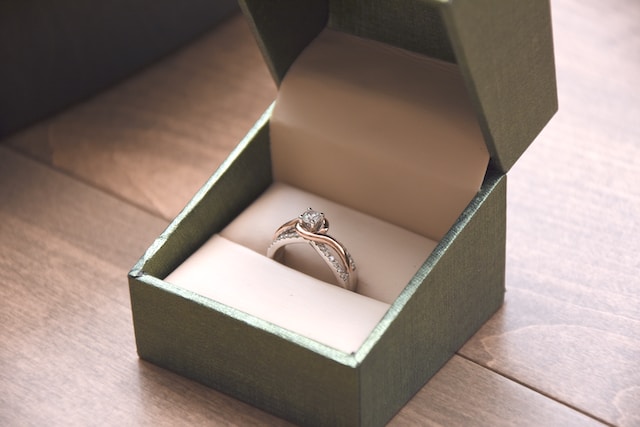Engagement rings, with their timeless allure, are more than just exquisite jewelry pieces. They represent an enduring symbol of love, commitment, and tradition. The history of engagement rings is a fascinating journey through time, evolving customs, and shifting symbolism. In this blog, we’ll explore the rich tapestry of engagement ring history, focusing on key historical periods and their contributions to this cherished tradition.
Ancient Origins: Rings as Symbols of Eternal Love
The concept of engagement rings dates back thousands of years. The ancient Egyptians are believed to be among the first to use rings as symbols of eternal love. These early rings were often crafted from braided hemp, leather, or reeds. The circular shape of these rings symbolizes the unending cycle of life and love, making them a powerful representation of commitment.
Roman Influence: Iron and Legal Contracts
The Romans also played a significant role in shaping the history of engagement rings. Their customs, however, were quite different from what we practice today. The Romans exchanged iron rings to symbolize strength and permanence. These rings were not just symbolic; they were part of a legally binding contract. The groom presented the bride with a gold ring to wear during the ceremony, while a more durable iron ring was intended for everyday use.
Medieval Gemstones: Nobility and Wealth
Medieval Europe saw a shift in the use of engagement rings. Rings adorned with precious gemstones, such as sapphires and rubies, became popular symbols of nobility and wealth. These gemstones carried deep symbolism, with sapphires representing fidelity and rubies signifying passion. Including these gemstones added layers of meaning to the concept of engagement rings, making them more than just a token of commitment.
The Diamond Era: Maximilian’s Influence
The diamond engagement ring, as we know it today, can be traced back to the 15th century and is popular with Archduke Maximilian of Austria. He set a trend when he proposed to Mary of Burgundy with a diamond engagement ring. This gesture marked the inception of the diamond’s association with engagements and marriage. Diamonds became a symbol of everlasting love with their brilliance and enduring quality.
The 19th Century: Diamonds for All
Diamond engagement rings continued to gain popularity throughout the 18th and 19th centuries. However, they were primarily reserved for the wealthy and noble. It wasn’t until the late 19th century that diamonds became more accessible to the general public. The discovery of diamond mines and improved cutting techniques made diamonds available to a broader range of people, solidifying their place as the gemstone of choice for engagement rings.
Modern Era: The Standard of Love
Today, the diamond engagement ring is a standard symbol of love and commitment. The circular shape still represents the eternity of love, while the diamond’s brilliance continues to signify enduring affection. Engagement ring styles have diversified, with various cuts, settings, and metal options available to suit personal tastes and preferences. Whether a classic solitaire or a unique custom design, the engagement ring remains a cherished and significant part of modern proposals and marriages. If you are looking for an engagement ring, look no further than Regal Hatton Garden jewellers.
The history of engagement rings is a captivating narrative that spans millennia, with each period leaving its unique imprint on this cherished tradition. From ancient Egyptian hemp bands to Roman iron rings, medieval gemstone symbolism, and the diamond era sparked by Archduke Maximilian, engagement rings have evolved into symbols of enduring love and commitment. In the modern era, they hold a special place in our hearts and signify the promise of a lifetime together.




